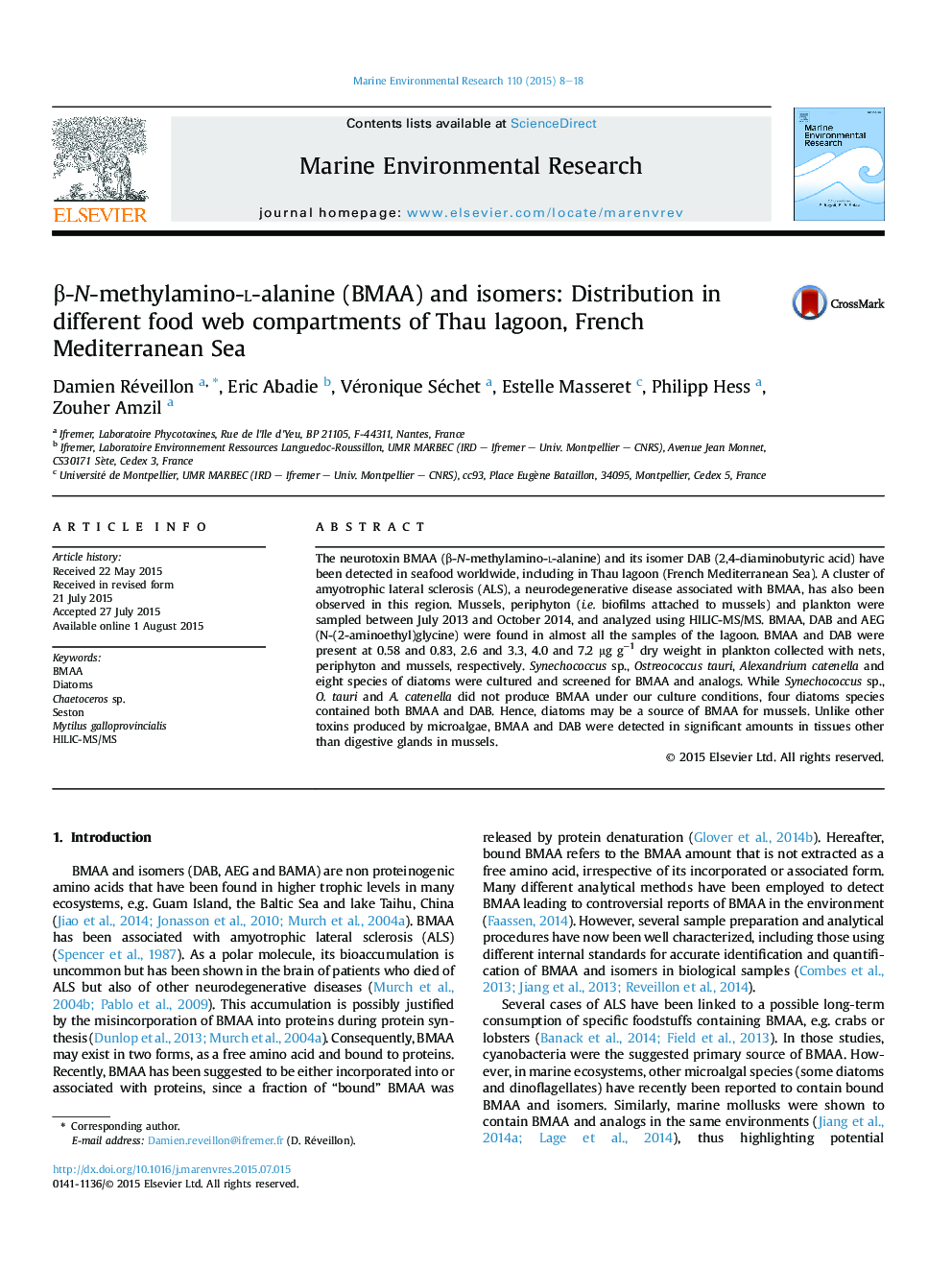| Article ID | Journal | Published Year | Pages | File Type |
|---|---|---|---|---|
| 6387630 | Marine Environmental Research | 2015 | 11 Pages |
â¢BMAA was detected in increasing concentrations along the food chain of Thau lagoon.â¢BMAA was present in 4 out of 8 cultured diatoms species, not in picocyanobacteria.â¢BMAA levels in mussels seemed to be linked to diatom abundances in Thau lagoon.â¢Significant amounts of BMAA were detected in non-visceral tissues of mussels.
The neurotoxin BMAA (β-N-methylamino-l-alanine) and its isomer DAB (2,4-diaminobutyric acid) have been detected in seafood worldwide, including in Thau lagoon (French Mediterranean Sea). A cluster of amyotrophic lateral sclerosis (ALS), a neurodegenerative disease associated with BMAA, has also been observed in this region. Mussels, periphyton (i.e. biofilms attached to mussels) and plankton were sampled between July 2013 and October 2014, and analyzed using HILIC-MS/MS. BMAA, DAB and AEG (N-(2-aminoethyl)glycine) were found in almost all the samples of the lagoon. BMAA and DAB were present at 0.58 and 0.83, 2.6 and 3.3, 4.0 and 7.2 μg gâ1 dry weight in plankton collected with nets, periphyton and mussels, respectively. Synechococcus sp., Ostreococcus tauri, Alexandrium catenella and eight species of diatoms were cultured and screened for BMAA and analogs. While Synechococcus sp., O. tauri and A. catenella did not produce BMAA under our culture conditions, four diatoms species contained both BMAA and DAB. Hence, diatoms may be a source of BMAA for mussels. Unlike other toxins produced by microalgae, BMAA and DAB were detected in significant amounts in tissues other than digestive glands in mussels.
